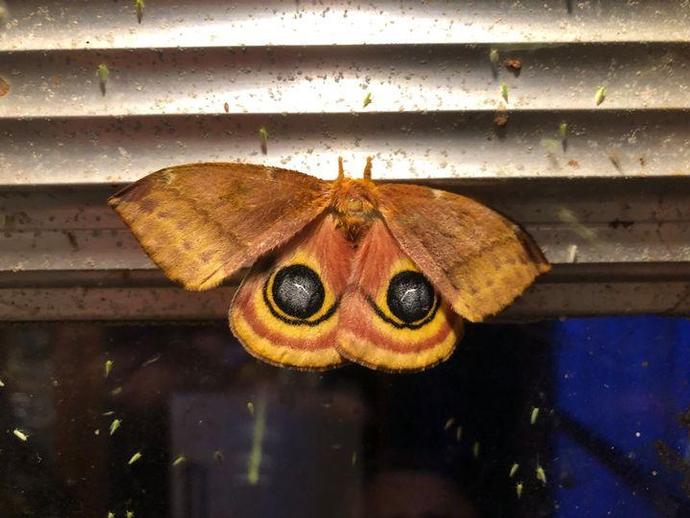July 24, 2021
We're reaching into the archives for today's #BenInNature update presented by our friends at Carter Bank & Trust! The following post was originally published on July 14, 2020.
When its wings are folded, the Io moth (Automeris io) probably wouldn't warrant a second glance; however, when its wings are extended to reveal the huge predator-deterring eyespots on its hindwings, it definitely leaves an impression!
These beautiful moths belong to the family Saturniidae, and they can be found throughout the east coast and into the midwest. We looked at another moth from this family back in early June: Callosamia angulifera, the tulip tree silkmoth.
Like all members of the family Saturniidae, adult Io moths do not eat and don't even have working mouthparts. The caterpillars, on the other hand, eat the foliage of a wide variety of plants. As the caterpillars grow older, they turn from orange to neon green and sprout dozens of painful, venomous spines! The adults, however, are perfectly harmless.
If you'd like to spot an Io moth, keep your eyes peeled during the first few hours of the night; they're strictly nocturnal, but they don't stay up too late!
ABOUT #BenInNature
Social distancing can be difficult, but it presents a great opportunity to become reacquainted with nature. In this series of posts, Administrator of Science Ben Williams ventures outdoors to record a snapshot of the unique sights that can be found in the natural world. New updates are posted Monday - Friday, with previous posts highlighted on the weekends. This series of posts is made possible thanks to the support of VMNH Corporate Partner Carter Bank & Trust (www.cbtcares.com).
NATURE PHOTO IDENTIFICATIONS
If you discover something in nature that you would like help identifying, be sure to message us right here on Facebook with a picture (please include location and date of picture) and we'll have our experts help you identify it!

 Hours & Admissions
Hours & Admissions Directions
Directions

